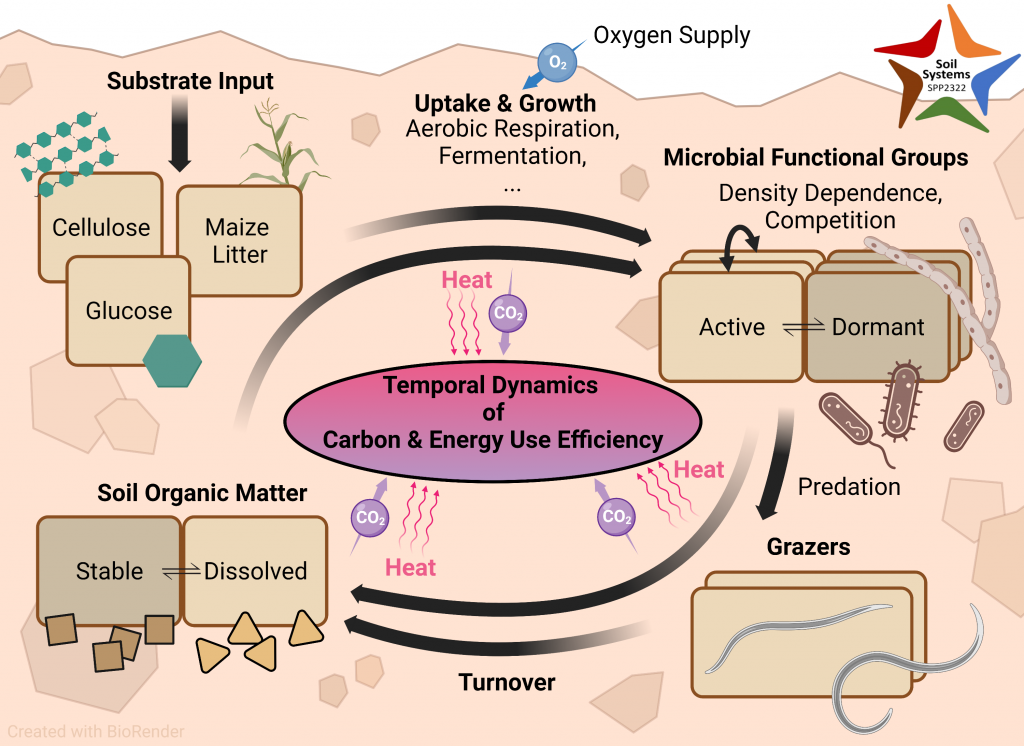Carbon and energy use efficiency of soil microorganisms unfolding over time

The fate of soil organic carbon depends on the carbon and energy use efficiencies (CUE and EUE) of the microbial community. C-timing aims to develop a hierarchy of microbial-explicit models of organic matter and energy turnover to understand and quantify the temporal dynamics of these important parameters as constrained by biotic factors and soil boundary conditions.
Models will simulate biological processes such as substrate uptake, microbial growth, maintenance and death. To account for the structure of the soil community, effects of density dependence and competition, microbial dormancy, and predation by grazers will also be studied.
Moreover, the metabolic pathways and efficiency of soil microorganisms depend on the types of available substrates and electron acceptors. Due to soil heterogeneity and irregular inputs, these factors are characterized by large spatial and temporal variability. In particular, aerobic and anaerobic conditions may co-occur within the same soil volume, and modeling microbial growth and turnover considering a dynamic anaerobic soil volume fraction will therefore be a specific task of C-timing.
Several models of increasing complexity with different representations of these processes will be built and analyzed in respect of i) equilibrium ratios of main soil carbon pools (stabilized, dissolved and microbial organic matter) at steady state, and ii) transient dynamics of main pools either in response to substrate input or to stress suppressing microbial growth and causing microbial die-off. These complementary model versions will be compared and fused, aiming to find the main drivers of temporal changes in CUE and EUE. The joint evaluation of both carbon and energy fluxes as emphasized by SoilSystems will play a critical role in the integration of these complex dynamics. Simulation results will be validated using experimental data gathered in the core experiments and collaborative projects of the priority program. The final selection of a parsimonious model version capturing the most important findings will be based on holistic principles and done in accordance with other modeling groups in the program and the approval of the SPP consortium.
Link to English scientific abstract
Link to German scientific abstract